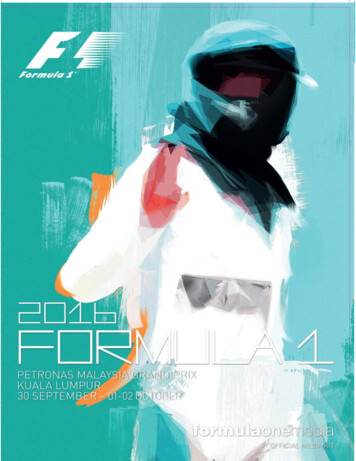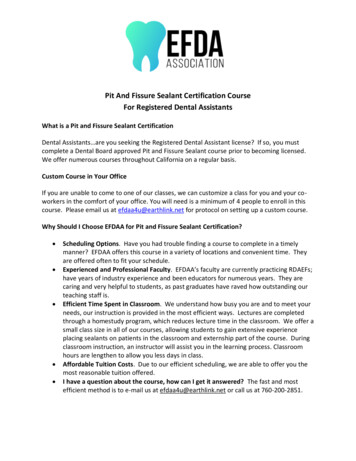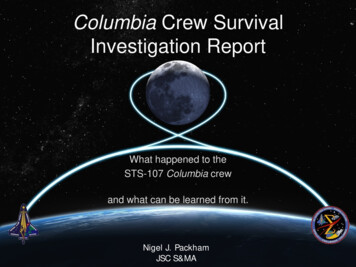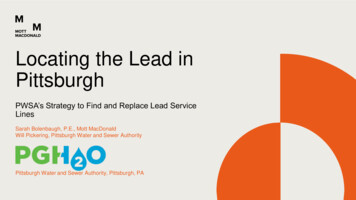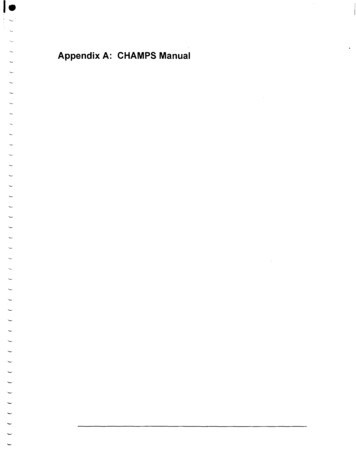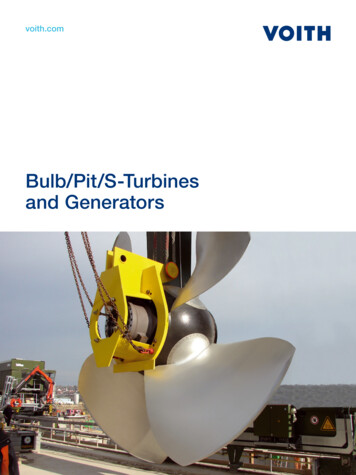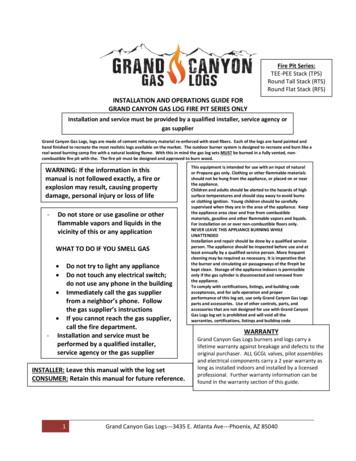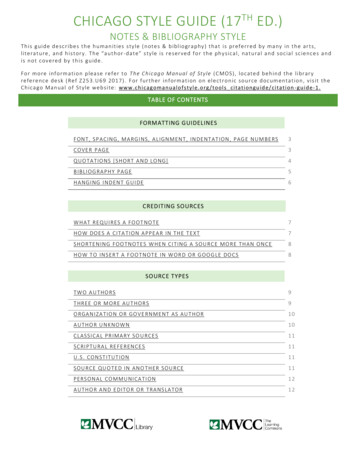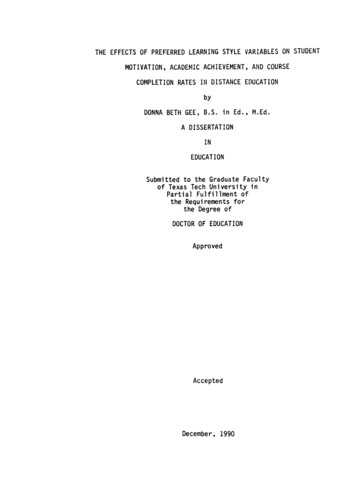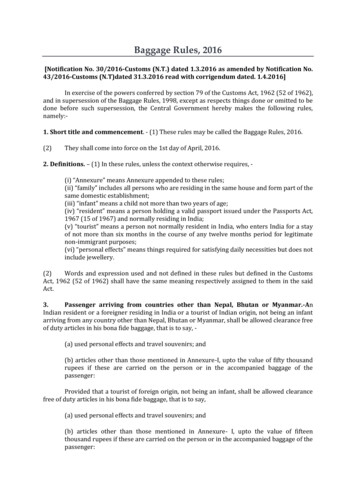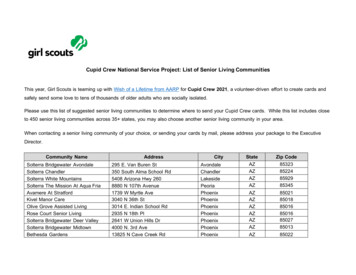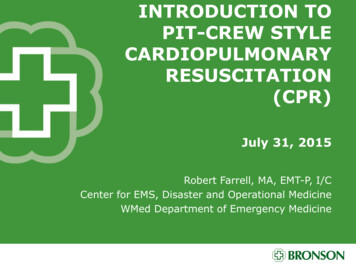
Transcription
INTRODUCTION TOPIT-CREW STYLECARDIOPULMONARYRESUSCITATION(CPR)July 31, 2015Robert Farrell, MA, EMT-P, I/CCenter for EMS, Disaster and Operational MedicineWMed Department of Emergency Medicine
Preparedness?!?
Disclosures & Conflicts Nothing to disclose No conflicts of interest
The Master Plan Introduction and overview Cardiac arrest– Define and review Challenges in care of cardiac arrestvictims– Current challenges expanded New and revised changes– Methods to improve challenges and potentiallyoutcomes of cardiac arrest patients
Challenges in Care System access– Early activation of EMS Landline Cellular Radio System response– Distance to respond from EMS location topatient– Availability of MFR’s for initial response– PSAP EMD MFR & EMS Response Arrival at patient
Cardiac Arrest Etiology9%Presumed CardiacE ology7%Trauma11%Respiratory73%Other
Cardiac Arrest Location1203 1Home/Residence4Street or HighwayHealthcare FacilityPublic BuildingNursing HomeNot Available85%Blank
Initial bystander CPR implementation– Self initiated Small number of patients actually receivebystander CPR 62% of cardiac arrests are unwitnessed– Dispatch guided Usually related to the inability to “recognize”cardiac arrest Caller may not give enough or the rightinformation to ascertain the patients condition
– Hands-only approach Now incorporated into all non-professionalcourses through AHA and other CPR programs– Initial rescuer CPR Limitation of resources Tasks for completion– CPR-compressions– CPR-ventilationsOral Airway, BVM, oxygen– AED application– Movement of patient– Obtaining initial history
Team CPR that doesn’t workFocusing on Other things andnot CPRResuscitations in the wrongplaceLack of effective CPR duringtransport
1st Steps Initiate new and revised changes tomanagement of cardiac arrest patients Best way is to understand where incardiac arrest patients we can makedifferences Lets start with the basics
Physiology of Cardiac ArrestCardiacTraumaRespiratoryOtherCardiacArrest
RespiratoryInability toventilate Hypoxia Hypercarbia Anxiety Release ofCatecholaminesMyocardialand endorgandysfunction Altered mental status Cardiac irritabilityLethal cardiacarrythmias Ventricular fibrillation Ventricular tachycardia Bradycardia Asystole
CardiacCardiacInsufficiency Coronary artery blockage Generalized hypoxia Cardiac tissue disease Lack of CatecholaminesMyocardialdysfunction Altered mental status Cardiac irritabilityLethalcardiacarrythmias Ventricular fibrillation Ventricular tachycardia Bradycardia Asystole
TraumaCardiacInsufficiency Decreased circulation Decreased oxygencapacity Direct cardiac injury Loss of sympathetic toneMyocardialdysfunction Altered mental status Cardiac irritabilityLethalcardiacarrythmias Ventricular fibrillation Ventricular tachycardia Bradycardia Asystole
Other CausesCardiacInsufficiency Decreased circulation Decreased oxygen capacity Cardiac muscle dysfunction Loss of sympathetic toneMyocardialdysfunction Altered mental status Cardiac irritabilityLethalcardiacarrythmias Ventricular fibrillation Ventricular tachycardia Bradycardia Asystole
All 4 “reasons” have 3 basicphysiological componentsCirculationOxygenationVentilationCardiac irritability and dysfunction CardiacArrest
Pit Crew CPR Modeled after NASCAR racing teams– Each person has a specific duty– Each person is strategically placed to maximizetheir effectiveness– Each duty is coordinated for optimal timing
Example of a NASCAR Pit Crew16 SecondsVehicle STOP to GOAll 4 tires changed
Formula 1 Pit Crew
Directions for Pit Crew CPR Personnel on scene assignments– Based on number of personnel available Key steps in order of needCPR – compressions onlyCPR – compressions only, addition of AEDCPR – compressions, ventilations and AEDCPR – compressions, ventilations, AED,evaluation of status and rhythm analysis– CPR – compressions, ventilations, AED,additional treatment/implementation decisions–––– airway management intravenous access and drug administration
M-CPR Human interaction– Dedicated person tomonitor CPRperformance– Available right nowto everyone
1st Rescuer Arrives Compressions only– Provides the most time on the chest Call for help early– Alert dispatch to confirmed arrest
24
2nd Rescuer Arrives Continue compression only CPR– Continues to provide the most time on thechest Alternate between rescuers every 100compressions– 1 minute on, 1 minute off– Diminishes rescuer fatigue Non-compressor applies AED as soon aspossible
26
3rd Rescuer Arrives Focuses on providing effective ventilation Gets BVM ready for use– Oxygen attached– Facemask on– Oral airway placed Uses CE or TE technique with 2 hands toapply BVM mask to patient Lift jaw into mask
Keep going . Non-compressor rescuer provides actual“squeeze” of BVM Goal is to provide the BEST ventilationpossible––––Each ventilation causes chest riseEach given over 1 seconds2 ventilations given every 30 secondsMinimizes gastric distention
Don’t Stop!!!!! Rescue 1 and Rescue 2– Continue to provide effective CPR– Continue to operate the AED and ONLY analyzewhen prompted by the AED– Immediately resume CPR if AED announces“No shock advised”
30
4th Rescuer Arrives Positioned out of the way of the effectiveCPR in progress Takes over operation of the AED– Including time monitoring for when rhythmanalysis will occur– Continues even after arrival of ALS Completes the “Critical CPR FunctionsChecklist”
32
5th Rescuer Arrives Documentation of events Reporting situation to ALS and others asneeded Acquiring additional equipment orpersonnel as needed
34
ALS Arrives – Primary Objective Receive report on patient status andsituation Apply 3 or 4 lead EKG to patient duringreceipt of report– The AED should NOT be removed EtCO2 (capnography) and SaO2 (pulseoximetry) may be applied at this time
Now that we are all here Reassess patient status– Adequate CPR– Effectiveness of ventilation Any complications – immediately identify andaddress Rescuer 1 – 5 continues with their duties––––CPR (2 persons)VentilationAED and timingSupplies/personnel and recording events
See you on the field for HOT!
Introduction to Pit-Crew StyleCardiopulmonary Resuscitation (CPR)Thank You!robert.farrell@med.wmich.edu
Pit Crew CPR Modeled after NASCAR racing teams -Each person has a specific duty -Each person is strategically placed to maximize their effectiveness -Each duty is coordinated for optimal timing . Example of a NASCAR Pit Crew 16 Seconds Vehicle STOP to GO All 4 tires changed .
